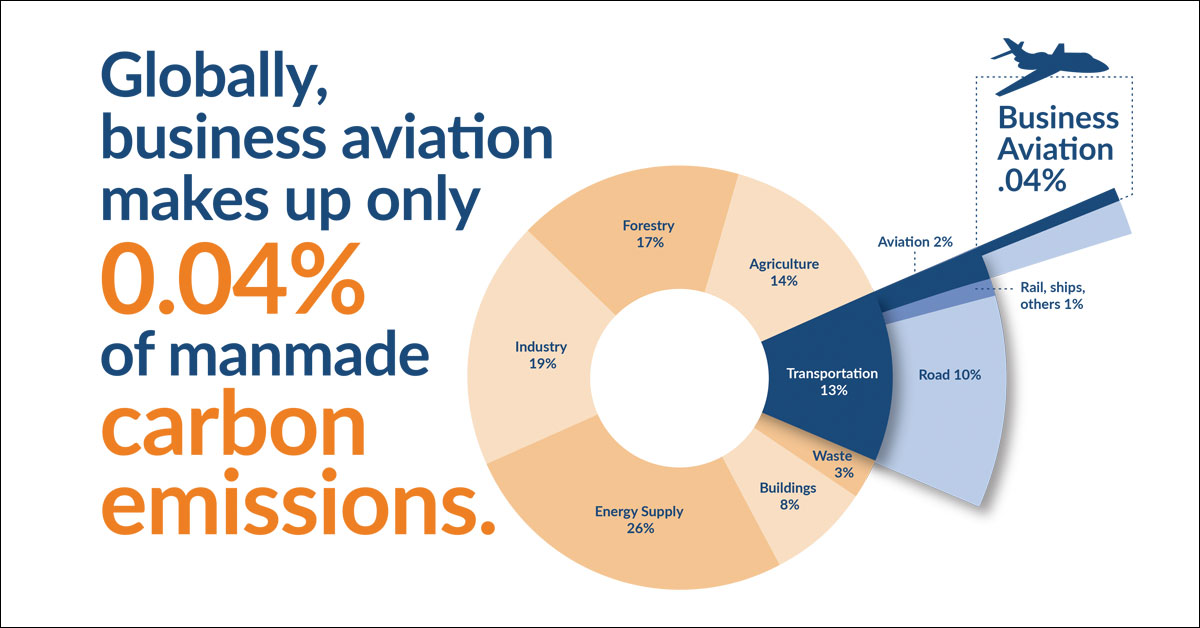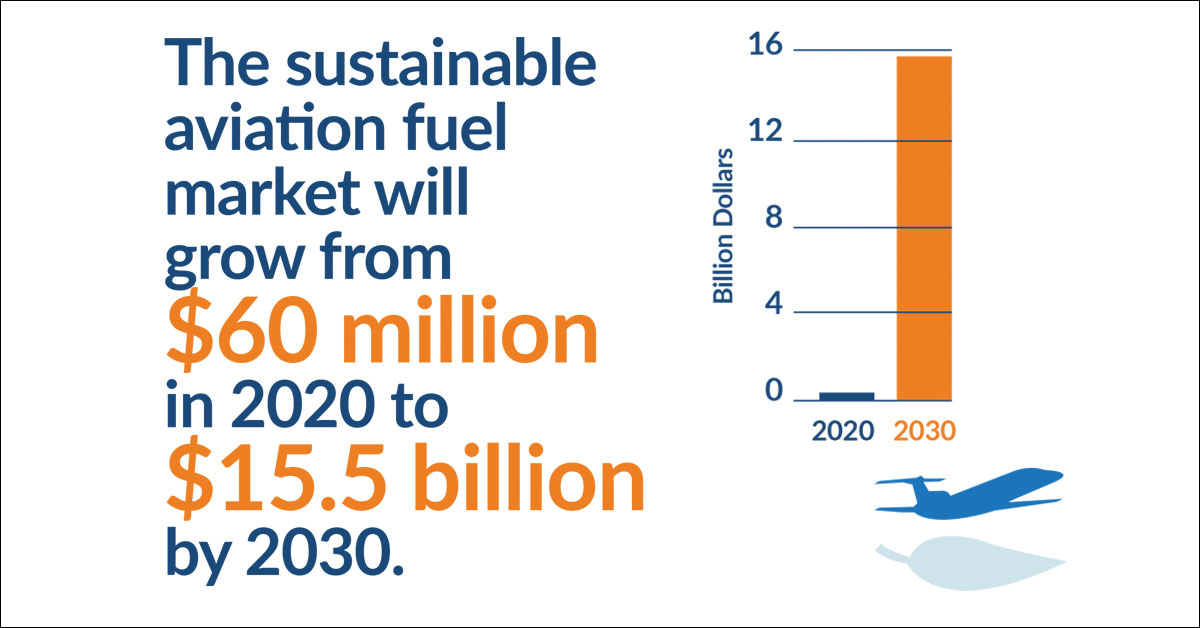Business aviation has long been committed to environmental responsibility and the industry has pledged to achieve net-zero carbon emissions by 2050. Many emissions-reducing technologies – including winglets, fuel-sipping engines, advanced composites and sleek aerodynamics – were pioneered by business aviation. Over the past four decades, the industry has cut carbon emissions by 40% with these innovations.
FACT:
Globally, business aviation operations make up only 0.04% of man-made carbon emissions.
FACT:
Sustainable aviation fuel (SAF), made from renewable feedstocks such as food waste or algae and blended with current jet fuel, is available at an increasing number of airports around the country. Production of SAF is expected to reach 1 billion gallons annually by 2025.
FACT:
Compared with fossil fuels, SAF has the potential to cut aviation’s lifecycle carbon emissions by up to 80% over the course of the fuel manufacturing process.
FACT:
Business aviation is investing in new power sources that will further cut its reliance on fossil fuels, including solar, hydrogen, hybrid gas-electric engines and fully electric-powered aircraft.


